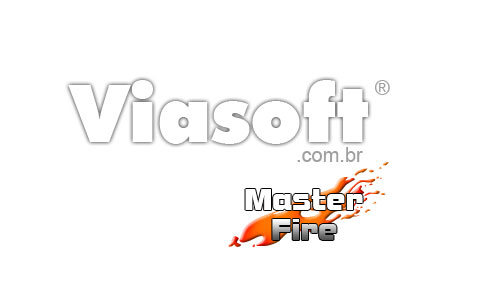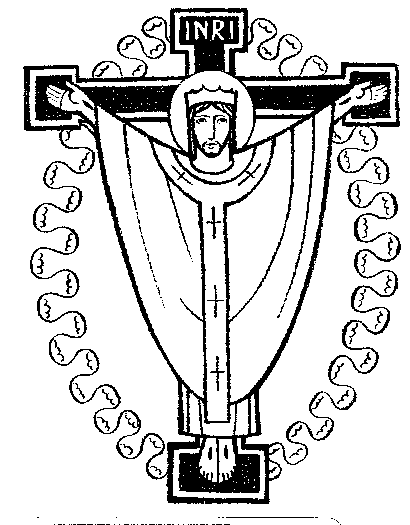MICHIGAN DEPARTMENT OF NATURAL RESOURCES DRAFT FINAL FOREST CERTIFICATION
1000 WEST CEDAR AVENUE GLADWIN MICHIGAN 48624 TELEPHONE (989)1032021 TEAM MICHIGAN TECHNOLOGICAL UNIVERSITY ELECTRICAL HAZARDS QUIZ 1
12DS812(I160) OFSRAL 2 OF 2 120514 MICHIGAN
2 MICHIGAN TEST FOR TEACHER CERTIFICATION CONTENT ADVISORY COMMITTEE
2200 NORTH SQUIRREL ROAD 216 O’DOWD HALL ROCHESTER MICHIGAN
3 USABLE DESIGN HISTORY CONFERENCE UNIVERSITY OF MICHIGAN OCTOBER
MICHIGAN DEPARTMENT OF NATURAL RESOURCES
MICHIGAN DEPARTMENT OF NATURAL RESOURCES DRAFT FINAL
Forest Certification Work
Instruction
Date of Draft Document: Effective Date: August 5, 2005
Revision Number: 1
Supersedes Version Dated: June 20, 2005

Work Instruction Title: 2.3 Integrated Pest Management and Forest Health
Work Area Group: 2 - Regeneration and Chemical Use

Purpose: To describe procedures to protect forest health using Integrated Pest Management (IPM) and wildfire suppression.

Work Instruction:
Responses to specific forest health issues like gypsy moth, emerald ash borer, and oak wilt are managed by the Forest Management Unit with technical direction and advice from the Forest Health Management Program Leader in cooperation with the Forest Health Monitoring Program Leader, USDA-FS, Michigan Department of Agriculture, other state, and federal agencies as needed.
Fire protection and management is accomplished under the FMFM Protection Program area including wildfire suppression, prescribed burning, and assistance to local fire departments.
Insects and disease. The following silvicultural guidelines to reduce timber losses to insect and disease using non-chemical methods are derived from a combination of forest health research, common practice, Timber Sale specs (VMS, 2005) and silvicultural guidelines addressing a range of forest health issues.
Utilize slash restrictions in red pine stands that are at risk for bark beetle infestations. Sale condition 5.2.15 is an example.
Specify seasonal operating restrictions on timber sales as per sale condition 5.2.13.
Do not leave a residual jack pine overstory over younger jack pine in areas where jack pine budworm is a potential hazard.
Plan harvests to avoid or reduce losses to insect outbreaks such as pine bark beetle (ips pini), spruce budworm or jack pine budworm.
Avoid planting red pine where sweet fern is present to minimize problems from Saratoga spittlebug.
Attempt to match cover type species selections to the site using habitat types (Burger and Kotar, 2003) as a guide to site suitability.
Schedule sanitation harvests
out of entry year as need is
and documented by Forest Health Specialists for insect problems
such as emerald ash borer in ash or two-lined chestnut borer in
oak.
On the subject of use of non-native tree species for reforestation FMFMD Policy 241 states, “Natural native species will be preferred whenever satisfactory survival and growth can be achieved. Non-native species and hybrids may be considered when there is no indication that they will displace other native flora more aggressively than would the native alternative species used for reforestation.” (MDNR, 1999)
Direct control measures of forest pests are coordinated by the Forest Health Management Program Leader. Observations of forest pests are reported using the Forest Health Field Report (Form R-4029-3) whenever they are observed.
Chemical use. Control measures utilizing chemical pesticides or bio-control agents are to be prescribed and applied under the supervision of a Forest Health Management Program Leader or his designee. This applies to controls of insect pests or invasive exotics. (see Chemical Use Work Instruction)
Invasive exotics.
“Invasive non‑native plants will not be used on public lands, mandated restoration projects or recommended for use on private lands” (DNR 2001).
Consideration should be given to the potential spread or increase of invasive exotic species in the planning and operational stages of all treatments. FMFM Forest health specialists will provide direction and advice to the FMUs in regard to control of invasive exotic species. Non-chemical methods will be the preferred method used to control and /or decrease invasive exotic species when ever possible. Chemical methods may be used alone or in combination with non-chemical methods as needed, (see Chemical Use Work Instruction).

Scope: (All State Forest Land and Affected Divisions): State Forest Land Other:
DNR – FMFM DNR – Wildlife DNR – Fish DNR – Law DNR – Parks

Responsibility and Role: (Staff who will implement or supervise this instruction)
|
Job Title/Division |
Role |
|
Forester, Forest Technician / FMFM |
Prescribe and administer harvest treatments. |
|
Timber management specialist / FMFM |
Review harvest prescriptions. Conduct regeneration treatments. |
|
Wildlife biologist, Wildlife Technician / WLD |
Review forest treatments, prescribe other specific habitat manipulations, may conduct treatments. |
|
Forest Health Specialist (Forest Health Monitoring Program Leader & Forest Health Management Program Leader/ FMFM |
Provide forest health training and coordination of responses to pest outbreaks, including invasive exotic plant species. Coordinate with Michigan Department of Agriculture. Provide program specific roles. |
|
Unit Manager / FMFM |
Oversee application of this work instruction at the forest management unit level |
|
Fire officer / FMFM |
Implement fire protection program and conduct prescribed burns. |

Training/Skills: (Those required to accomplish work instruction)
|
Item |
Brief Description of Skill or Course |
Exists / New |
|
Forest health update |
Annual forest health updates and workshops conducted by Forest Health Specialists. (Forest Health Monitoring Program Leader & Forest Health Management Program Leader) |
E N |

References:
MDNR, 1999. FMFMD Policy 241, Reforestation
Forest Health Field Report, R-4029-3
Burger, T and Kotar, J. 2003. “Guide to Forest Communities and Habitat Types of Michigan”.
VMS, 2005. MDNR, VMS timber sale management software, sale specific conditions.
Chemical Use Work Instruction
DNR Position Statement For Native Plants In Resource Management, 05/24/01

Monitoring:
Forest health monitoring
Pest surveys
Emerald Ash Borer monitoring
Beech Bark Disease monitoring

Records:
Forest Treatment Proposal (R-4048) filed in the Forest Management Unit Offices
Forest Treatment Proposal Completion Report (R-4048-1) filed in Forest Management Unit Offices
Forest Health Highlights Report http://www.michigan.gov/documents/2004ForestHealthHighlights3_116430_7.pdf

7800 E MICHIGAN AVE KALAMAZOO MICHIGAN 49048 PHONE (800)
7800 E MICHIGAN AVE KALAMAZOO MICHIGAN 49048 TÉLÉPHONE (800)
ACF NATIONALS 2011 PACKET BY MICHIGAN A (BRYAN BEREND
Tags: certification work, resources, natural, department, michigan, draft, certification, final, forest
- COUNCIL REGULATION (EC) NO 4282000 OF 14 FEBRUARY 2000
- ENUNCIADOS DE PROBLEMAS PARA INFORMATICA I INGENIERIA INDUSTRIAL ING
- ENCUENTRO SOLAR 2004 SALUD SOSTENIBILIDAD Y ENERGÍA SOLAR EN
- E ROMANGA STATE SCHOOL’S RESPONSIBLE BEHAVIOUR PLAN FOR STUDENTS
- CONSEJERÍA DE HACIENDA Y ADMINISTRACIÓN PÚBLICA ANDALUCÍA 27 DE
- SHIP ADDRESS FOR FAULTY ITEMS TNT ERN IDE
- UNSUBSCRIBE AT HTTPWWWMASTERBONDCOMPHPLIST?PUNSUBSCRIBE&ID2 SUBSCRIBE AT HTTPWWWMASTERBONDCOMPHPLIST?PSUBSCRIBE&ID2 THE FOLLOWING
- (PARTNERSHIP TO ENSURE REFORM OF SUPPORTS IN OTHER NATIONS)1
- BOHEMIAN NATIONAL HALL IN COOPERATION WITH CZECH CENTER NEW
- ACTIVIDAD ABIERTA EL DESTINO DE LAS DIFERENCIAS ENTRE PSICOANALISTAS
- PROCESSO Nº 2021040246 CONTRATO Nº 2952021 SERVIDORA MAT Nº
- AMERICKÁ VELKOMĚSTA A JEJICH VLIV NA ŽIVOTNÍ PROSTŘEDÍ AMERIKA
- 10 LAT PZWLP W 2015R ORGANIZACJA OBCHODZI JUBILEUSZ 10
- FARMACEUTSKOBIOKEMIJSKI FAKULTET SVEUČILIŠTA U ZAGREBU IZVEDBENI PLAN AKADEMSKA
- VIVACE PROYECTO CURRICULAR ÁREA DE EDUCACIÓN ARTÍSTICA MÚSICA
- BRACKLEY SKATE PLAZA DEVELOPMENT PLAN DEVELOPMENT PLAN BRIEF BRACKLEY
- FIRST REPORT OF LEIFSONIA XYLI SUBSP XYLI CAUSAL AGENT
- ESTABLECE AREAS DE MANEJO Y EXPLOTACION DE RECURSOS BENTONICOS
- UNA METODOLOGÍA SIMPLE PARA EVALUAR CONTEXTOS GENERALIZADOS DE REDUCCIÓN
- 18 PROCESO 103IP2000 SOLICITUD DE INTERPRETACIÓN PREJUDICIAL
- EK5 TASLAK SÖZLEŞME İŞBU SÖZLEŞME BIR TARAFTAN
- ASSESSMENT FOR LEARNING ASSESSMENT POLICY AND PROCEDURES CONTENTS
- NAME DATE FERTILIZER LABELS AND APPLICATION RATES OBJECTIVE STUDENTS
- AYUNTAMIENTO DE CUENCA REF SECRETARÍA GENERAL JMACAMOA DON JOSÉ
- 923474doc 2 of 1 Maintenance Worker Nature of Work
- NORMA OFICIAL MEXICANA NOM 012SSA11993 REQUISITOS SANITARIOS QUE DEBEN
- OLTALMAD ALÁ FUTUNK ISTENNEK SZENT ANYJA KÖNYÖRGÉSÜNKET MEG NE
- PLAN DE NEGOCIOS PARA LA EMPRESA CALZADO SAJO DEL
- THIS IS MY HEALTH PASSPORT MAKING HEALTH CARE SAFE
- GRADO 3 VA AL GRADO 4 CALENDARIO DEL VERANO
 VEREINBARUNG ZWISCHEN SCHULZENTRUM UND BETRIEB ZUR DURCHFÜHRUNG VON BETRIEBSPRAKTIKA
VEREINBARUNG ZWISCHEN SCHULZENTRUM UND BETRIEB ZUR DURCHFÜHRUNG VON BETRIEBSPRAKTIKARESIDENT RIGHTS IN NURSING HOMES INTRODUCTION NURSING HOME RESIDENTS
 SYMPATHETIC REACTION TO OTHERS SHOWING SIGNS OF BEING BITTEN
SYMPATHETIC REACTION TO OTHERS SHOWING SIGNS OF BEING BITTENMANUAL DE USUARIO IDENTIFICADOR DE LLAMADAS POR VOZ KEROVOZ
SANDAN GI DRILLS ONE THROUGH SIX SEMETE AND UKETE
 SOFTWARE CLAGRO MANUAL DO SOFTWARE ÍNDICE 10 MENU CONFIGURAÇÃO
SOFTWARE CLAGRO MANUAL DO SOFTWARE ÍNDICE 10 MENU CONFIGURAÇÃO CONSELL ESCOLAR DE LES ILLES BALEARS PROPOSTA D’INFORME NÚM
CONSELL ESCOLAR DE LES ILLES BALEARS PROPOSTA D’INFORME NÚMORIENTACIÓN SOBRE EL USO DE MASCARILLAS1 EN LA COMUNIDAD
CHARGE 110C PAGE 1 OF 1 10 INSTRUCTIONS
MT LEBANON HIGH SCHOOL STUDENT ACTIVITIES CALENDAR 20162017 AUGUST
GLOBAL BUSINESS DIALOGUE GBD INTENDS TO HOST A PANEL
PROCÉDURE OPÉRATOIRE STANDARDISÉE POS NOM DE LINSTITUTION FORMATION
5 OBRAZAC PLANA INTEGRITETA REGISTAR RIZIKA PROCJENA I MJERENJE
 HORA INTERMEDIA DEL VIERNES III DEL SALTERIO V DIOS
HORA INTERMEDIA DEL VIERNES III DEL SALTERIO V DIOS ORGANISATIONAL BEHAVIOUR MBA 12 ORGANISATIONAL BEHAVIOUR SYLLABUS UNIT 1
ORGANISATIONAL BEHAVIOUR MBA 12 ORGANISATIONAL BEHAVIOUR SYLLABUS UNIT 1 SIGDAL KOMMUNE REGLER FOR SKOLEFRI FOR ELEVER UTENOM SKOLEFERIER
SIGDAL KOMMUNE REGLER FOR SKOLEFRI FOR ELEVER UTENOM SKOLEFERIER202122 FORM AFF13 STUDENT ASSESSMENT FEEDBACK FORM THIS FORM
DISPOSICIONES DE CARÁCTER GENERAL A QUE SE REFIERE EL
STATE V DAVID WAYNE KUNZE COURT OF APPEALS OF
STATE OF INDIANA HANGAR LEASE EDS OR CONTRACT